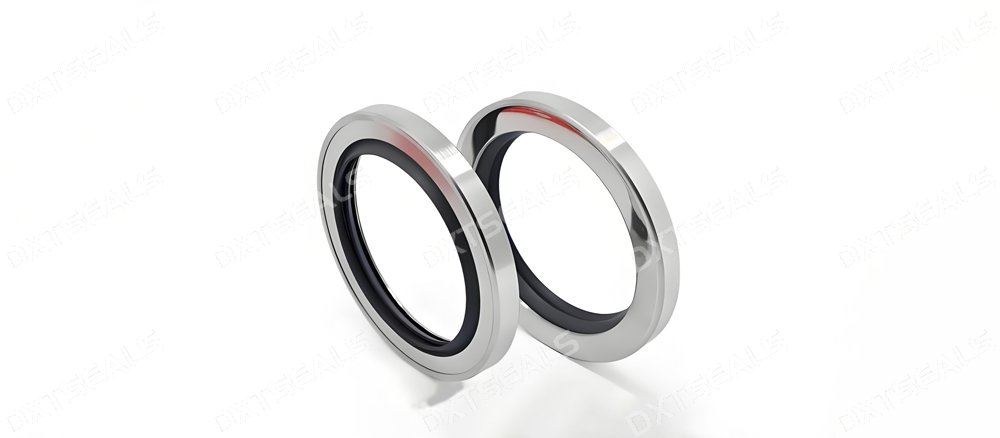
Oil seals are critical components in rotating and reciprocating equipment, helping to prevent leakage, retain lubricants, and exclude contaminants. However, selecting the wrong oil seal for a specific application can lead to performance issues, premature failure, and costly downtime.
This guide outlines how to choose the most appropriate oil seal based on various working conditions such as temperature, speed, pressure, media compatibility, and environmental exposure.
🔍 Key Factors in Oil Seal Selection
1. Operating Temperature
The temperature of your system plays a major role in seal material selection. Different elastomers perform differently under heat:
| Temperature Range | Recommended Material |
|---|---|
| -40°C to +100°C | NBR (Nitrile Rubber) |
| -20°C to +200°C | FKM (Viton® / Fluorocarbon) |
| Up to +250°C (short-term) | PTFE (Polytetrafluoroethylene) |
If your system experiences thermal cycling or high ambient heat, FKM or PTFE seals offer excellent stability.
2. Rotational Speed
High shaft speeds can generate heat and cause seal lip wear. For high-speed applications:
-
Choose low-friction lip designs
-
Select materials like PTFE or FKM with good thermal and wear resistance
-
Ensure the shaft has a smooth finish (Ra 0.2–0.8 µm)
3. Operating Pressure
Most standard oil seals handle pressures up to 0.5 bar. For higher pressures (up to 10 bar):
-
Use pressure-resistant seals or seals with auxiliary support rings
-
Consider hydrodynamic seal designs for rotating shafts
4. Fluid Compatibility
Always ensure that the oil seal material is compatible with the media in contact:
| Fluid Type | Suitable Seal Material |
|---|---|
| Mineral oils | NBR, FKM |
| Synthetic or ester-based oils | FKM, HNBR |
| Water / Steam | EPDM, FFKM |
| Acids / Solvents | PTFE, FFKM |
Chemical compatibility charts are essential during selection.
5. Environmental Conditions
Consider external factors such as:
-
Dusty environments: Choose seals with dust lips (double lip design)
-
Submersion in water or chemicals: Use corrosion-resistant materials
-
Outdoor exposure: UV-resistant elastomers like FKM and EPDM perform better
6. Installation Constraints
Ensure that the selected seal fits within the housing and shaft dimensions:
-
Shaft tolerance: h11
-
Bore tolerance: H8
-
Installation depth: Confirm with catalog or drawing specs
Some seals are designed with metal cases or reinforced structures to ease installation and resist deformation.
✅ Application Examples
-
Automotive engines: High-speed, high-temperature → FKM with dust lip
-
Hydraulic pumps: Moderate pressure, mineral oil → NBR or HNBR
-
Chemical processing: Harsh media exposure → PTFE seals
-
Outdoor agricultural machinery: Dirt, UV, varying temperatures → Double-lip FKM seals
🛠 Pro Tips for Seal Longevity
-
Always lubricate the seal lip during installation
-
Use appropriate seal installation tools to avoid damage
-
Regularly inspect shaft surface condition for wear or scoring
-
Replace seals during preventive maintenance to avoid failure
🔚 Conclusion: The Right Seal = Performance + Reliability
Choosing the right oil seal involves more than just matching dimensions. It requires a full understanding of the working environment, fluid types, and dynamic conditions. By taking a condition-based approach to seal selection, you ensure greater equipment reliability, lower maintenance costs, and longer service life.
DXTSEALS offers a wide range of oil seals tailored to demanding applications across industries such as automotive, hydraulic systems, and industrial machinery. Our experts can assist you in selecting or customizing the right seal for your needs.
🔗 Explore our full oil seal range at www.dxtseals.com
📩 Contact us for technical support or product customization!
